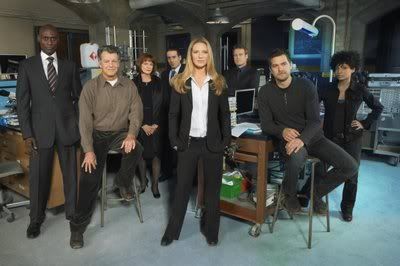Fox’s “Fringe” premiered last season to a ridiculous amount of buzz, thanks to the combination of J.J. Abrams, Alex Kurtzman, and Roberto Orci, a trio whose various credits (many of them shared) – “Alias,” “Lost,” “Mission: Impossible III,” “Transformers,” and the then-still-forthcoming “Star Trek” – were more than sufficient to get the sci-fi fanboys into a tizzy. Things may have started off a bit rocky, mostly due to a slight uncertainty about exactly what the hell was going on, but by the close of the season finale, when we found ourselves barely getting over that guest appearance by Leonard Nimoy before we found ourselves looking at a still-standing World Trade Center, we were already ready for Season 2 to begin.

“As we went along, I think we got a better handle on the balance of our characters and the plots and making sure that our plots were character-centric,” admitted executive producer Jeff Pinkner. “I think that we learned how to write for these actors, these characters over time, and I think we learned this in ‘Alias’ and ‘Lost.’ The shows that are really about the characters, the characters and the actors playing them start to meld a little bit more, and I think we’ve gotten better at that.”
Orci noted that one of the series’ biggest issue from the very beginning was figuring out the percentage of standalone episodes versus a larger serialization. “We’ve all read the research that says a regular viewer watches three episodes in a year, etcetera, etcetera, so you try to modulate,” he explained. “In the first season, we actually had to sort of plan around resetting the series once or twice and doing it around three- or four-week-long breaks. And that kind of exercise makes us, in Season Two, a little more flexible, a little bit more able to read the green. And I think, you know, the fact that we are closer than we were from New York is also helpful. We can all be up there a little bit more; we can communicate better with each other. I think we’re just a tighter ship this year.”


